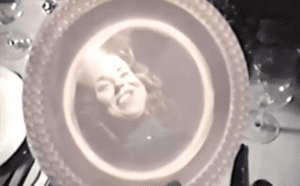
QUINCY, Ill. – One of the best known, but forgotten, kitchen cleaners of the 20th century is Bab-O. Today, the brand is a trademark and product of, and a perfect complement to, the cleaning products of the family owned Fitzpatrick Brothers of Quincy, Illinois. Their operating manifesto? A business with a spotless reputation.
The cleaner is a mix of detergent, bleach and scouring powder, and is used in households and in institutions, in the matter of Colgate’s Ajax (circa 1947) or Comet (circa 1956, formerly a P&G product and now owned by Kik Consumer Products). Bab-O is also the remaining product of what was America’s largest soap brand, Babbitt’s Best Soap. The cleanser Bab-O was originally created and produced by soap and lye maker B.T. Babbitt Inc. in Albany, New York.
Founded By Inventor

The founder Benjamin Talbot Babbitt started his company around 1836. The company had different products including a 1776 soap flakes brand, and his eponymous Babbitt’s Best. Babbitt’s Best Soap was one of the best known commercial products in the U.S. in its time; so much so that the name “Babbitt” gained literary fame as it was used in the title of the famous Sinclair Lewis novel. Because of the novel, the word Babbitt, according to Webster’s, connotes a certain type of businessman impressed with himself.
It is ironic that the Babbitt name was used in a derogatory way; Babbitt improved the living standards of American life, as products like his brought down the cost of soap for all, helped free Americans from the very real danger of making their own lye, and vastly made cleanliness and sanitation easier in the home. The factory process also made the saving of fats from cooking profitable; the fats were recycled into soap products.
The era of the company’s birth parallels the beginning of the mass production of consumer products in the U.S. Today, these soap companies still survive as Colgate-Palmolive, Unilever (from England as Lever Brothers) and Procter & Gamble. Even Arm & Hammer, which dates from 1846, has roots in this era.
Mass Production in N.Y. Soap Nexus

While operations are now located across the U.S., there was a New York nexus of soap manufacturing, including P&G’s Staten Island operations, now demolished. This concentration helped to develop spin-off industries, including consumer packaging, food products, advertising agencies and even soap operas, which were once an industry in themselves in Manhattan.
A local historian tells the story.
Bab-O was one of many products of B.T. (Benjamin Talbot) Babbitt, a soap manufacturer who established his company in New York City in 1836 (after a previous stint as a engine and pump manufacturer in Little Falls). A quick run through the New York Times archives shows a run of articles involving a major embezzlement from his company around 1877, and a further swindle at the hands of a “lady detective” a short time later.
Bab-O History from local historian Carl Johnson, Albany
The original Babbitt building in Albany is on the National Register of Historic Places. One notable bit of trivia is connected to the later owner of the company, Jerome Mendelson. The family commissioned Frank Lloyd Wright to design a house, though it was never built.
The history website Slices of Blue Sky has a useful history of Babbitt’s soap works. Below, images of the New York factory, and how the factory worked.

Factory in New York City
At right, a view of B.T. Babbitt’s “best soap” factory buildings in New York City. The drawing is from the Library of Congress, by J.A. Sherman. The drawing from an elevated perspective shows a soap factory, roof tops, street activity, and 9th Avenue elevated railroad, looking northwest across the Hudson River to the New Jersey Palisades.

Babbitt’s Extensive Soap Manufacturing Works
At left, a view of the soap operation inside the Babbitt factory. The images is from a Scientific American magazine from 1879 which describes the soap making process at his factory in New York.
Below, a vintage Bab-O commercial. The company made the transition to the television era, but did not thrive like other soap giants like Lever, Colgate and P&G.









I have a 1950 Bab-o 14oz unopened can. I know it is from 1950 because it has a paper sleeve stating “the New 1950 Babo”. Going to throw it away but then found your web site. If there is an interest I will send a photo or send the actual can. It is in very good condition.